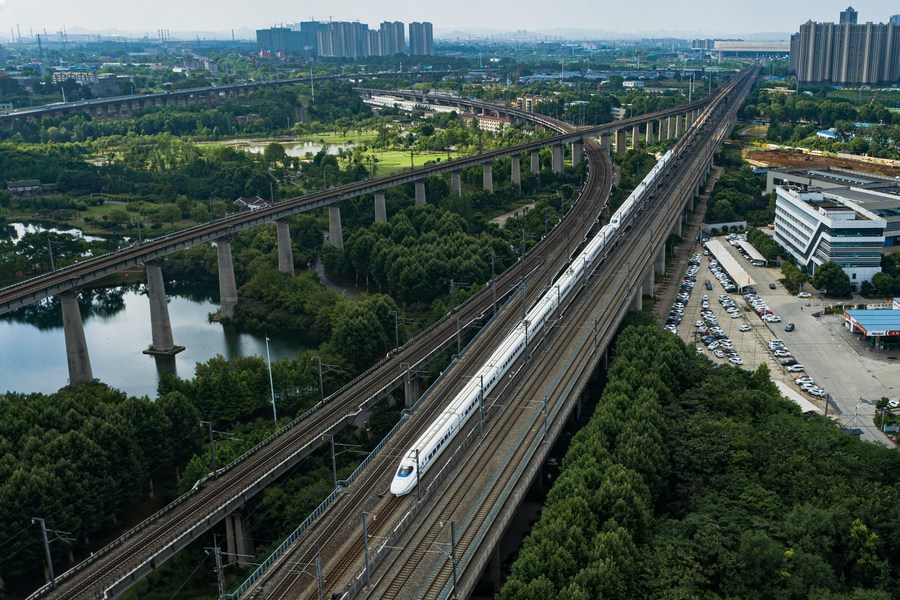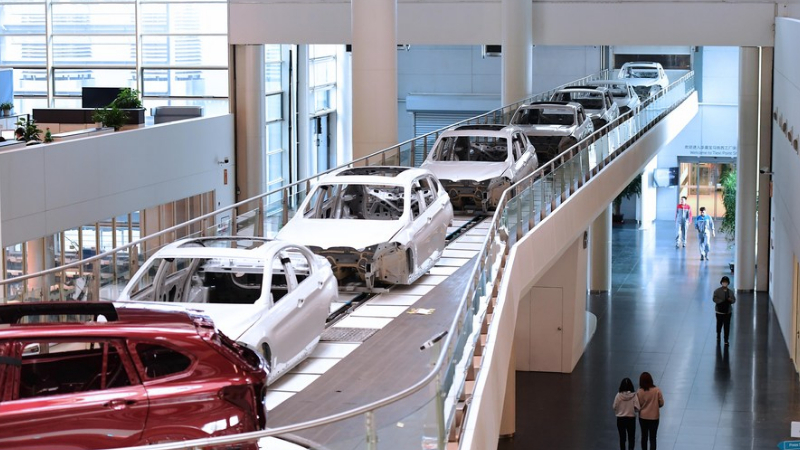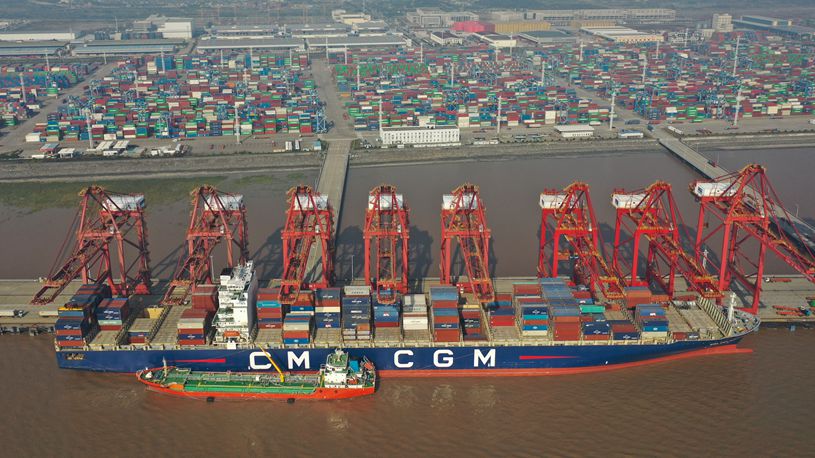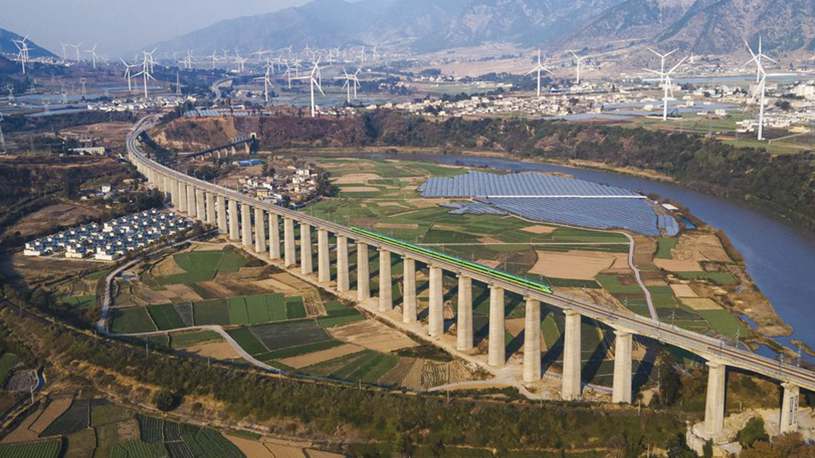
Aerial photo shows a high-speed train running on the Beijing-Wuhan section of the Beijing-Guangzhou High-speed Railway, in Wuhan, central China's Hubei Province, June 20, 2022. (Xinhua/Xiao Yijiu)
BEIJING, Dec. 26 (Xinhua) -- A total of 1.69 billion passenger trips have been made on the Beijing-Guangzhou high-speed railway since it went into operation ten years ago, official data showed.
Thanks to the existence of this railway, travel time between the capital Beijing and the southern economic hub Guangzhou has been slashed from over 40 hours to about eight hours.
As the backbone of the high-speed rail network in China, the 2,298-km Beijing-Guangzhou high-speed railway is closely connected with 12 other high-speed railways in the country.
In June this year, the Beijing-Wuhan section of the railway raised its speed from 310 km/h to 350 km/h, reducing the shortest trip between Beijing and Wuhan, the capital of central China's Hubei Province, by about half an hour to three hours and 48 minutes.
At present, China boasts some 3,200 km of high-speed railways with an operating speed of 350 km/h on lines such as the Beijing-Shanghai High-speed Railway, the Beijing-Tianjin Intercity Railway, and the Beijing-Zhangjiakou High-speed Railway.
Ten years ago, as a crew member, 19-year-old Sun Mengnan was on the first train operating on the Beijing-Guangzhou high-speed railway, which departed from the Beijing West Railway Station. Sun witnessed the station enter the high-speed rail era and become one of the busiest railway hubs in the capital.
Over the ten years, Sun, now a chief train conductor, said the train crew have been improving their service to satisfy passengers.
"I would like to pass on my experience to more people so that they can contribute to the development of China's railway," Sun said.
A passenger surnamed Peng said he lives in Wuhan and works in Beijing. "The trip between the two cities took around ten hours a decade ago. It has been shortened to over three hours and has become more comfortable, as there are better services such as e-tickets, Wi-Fi, online meal booking, and quiet carriages on the train," he said.
The development of the Beijing-Guangzhou high-speed railway has also promoted the development of cities along the railway. Many railway stations have now become the new landmarks of those cities.
"Based on the railway hub, a modern business district will be built around the Wuhan Station, which has now attracted multiple developers," said Yi Xin, an official of China Railway Wuhan Group Co., Ltd.
Han Yan, from the Faculty of Architecture, Civil and Transportation Engineering of Beijing University of Technology, said that the Beijing-Guangzhou high-speed railway played a leading role in land development, industrial transfer, urban area spatial layout, and economic and trade exchanges.
"The railway line links economic plates with different resource advantages and several historical and cultural cities. It helps realize the upgrading of the transportation network in north and south China," said Wang Huaixiang, deputy head of the Transport and Economic Research Institute at the China Academy of Railway Sciences Corporation Limited. ■












